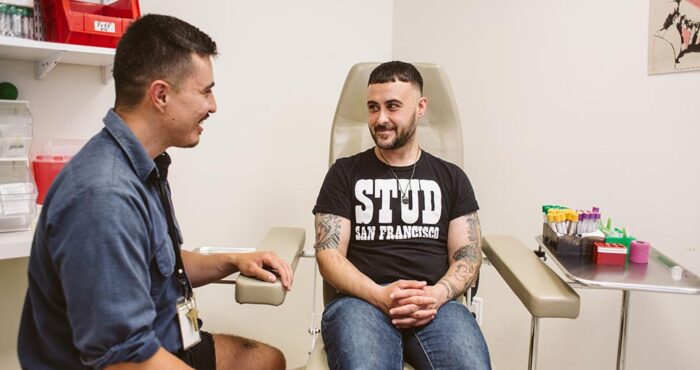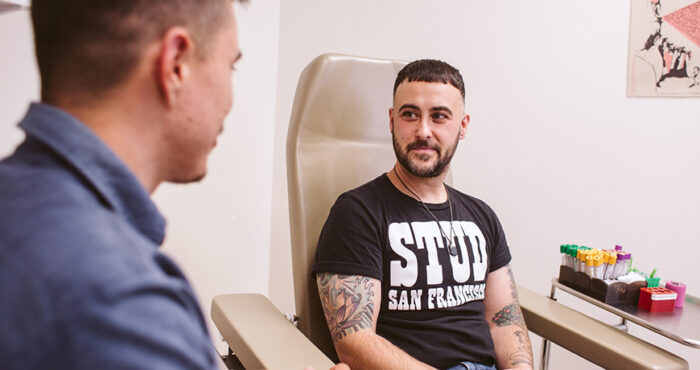Groundbreaking new report highlights overdose prevention needs of Latino/x communities in San Francisco
This year, it’s expected that there will be more than 650 fatal overdoses in San Francisco–with Black and Latino/x residents disproportionately affected. To better understand the specific contexts in which Latino/x residents are using drugs–and the factors that may place residents at higher risk of overdose–community health workers and researchers from San Francisco AIDS Foundation and the National Harm Reduction Coalition joined forces to find out. The results of their assessment, authored by Carlos Martinez, Nik Altenberg, Julia Casas, and Isabella Permenter were published recently, in a groundbreaking report that sheds light on some critical issues faced by Latino/x community members who use drugs.
From in-depth interviews conducted in Spanish and English with more than 100 Latino/x community members who use drugs, researchers gleaned insights from this group of participants who were primarily foreign-born (with about half from Mexico), largely undocumented (48%), and in precarious housing situations including homeless (25%) or in SRO or other assisted housing situations (37%).
Over a quarter (28%) of participants had experienced an overdose at least once, and many had overdosed multiple times. Methamphetamine use was common, and the most commonly-reported substance causing overdose, followed by fentanyl. Over a quarter of participants reported having used fentanyl at least once.
Although most participants engaged in regular drug use (with multiple substances), knowledge of harm reduction was low. The vast majority (67%) were unfamiliar with the term or its meaning. By contrast, more than half of participants had participated in abstinence-based programs, even though many reported these programs were ineffective in meeting their substance use needs.
“It was surprising to learn that knowledge of harm reduction was this low among Latino/xs who use drugs in San Francisco, especially given the widespread availability of harm reduction services in San Francisco and the substance use experience of people surveyed,” said Carlos Martinez, MPH, PhD, assistant professor at the University of California, Santa Cruz. “Clearly, there is a great need for culturally and structurally competent harm reduction services and information to reach this population.”
Over half of the participants surveyed were not familiar with the opioid overdose reversal medication, naloxone, and many who were familiar with the medication did not know where to obtain it. In addition, participants said that fear of police, language barriers, and lack of familiarity with services also challenged their ability to access harm reduction and overdose prevention services.
Importantly, the report recommends a number of practical options that should be considered in light of these findings.
Improving distribution of harm reduction and overdose prevention resources, such as the overdose reversal medication naloxone (Narcan), improving the reach of existing harm reduction and substance use treatment/counseling programs, and making services available in Spanish or Mayan-languages are all identified as priorities. Other recommendations point to the need for services that easily reach people who are undocumented and that are unable to access services during regular business-day hours.
“We are glad to have the findings of this research available,” said Claudia Figallo, manager of substance health equity at SFAF. “We cannot cut and paste from other models to serve the Spanish-speaking community. We need to strategize on ways to better reach Latino/x people who use drugs, with culturally accessible and relevant Spanish services and information. This is a matter of racial justice, and a responsibility for all of us involved in this work.”
“The results of this needs assessment were a startling reminder of the barriers faced by Spanish and Maya-speaking Latino/x people who use drugs, and the work we must focus on to improve the health and lives of this community,” said Jorge Zepeda, director of Latinx Health at SFAF. “We are grateful to all of the people who participated in this research, and look forward to advancing our work for health, social and language justice for all.”









